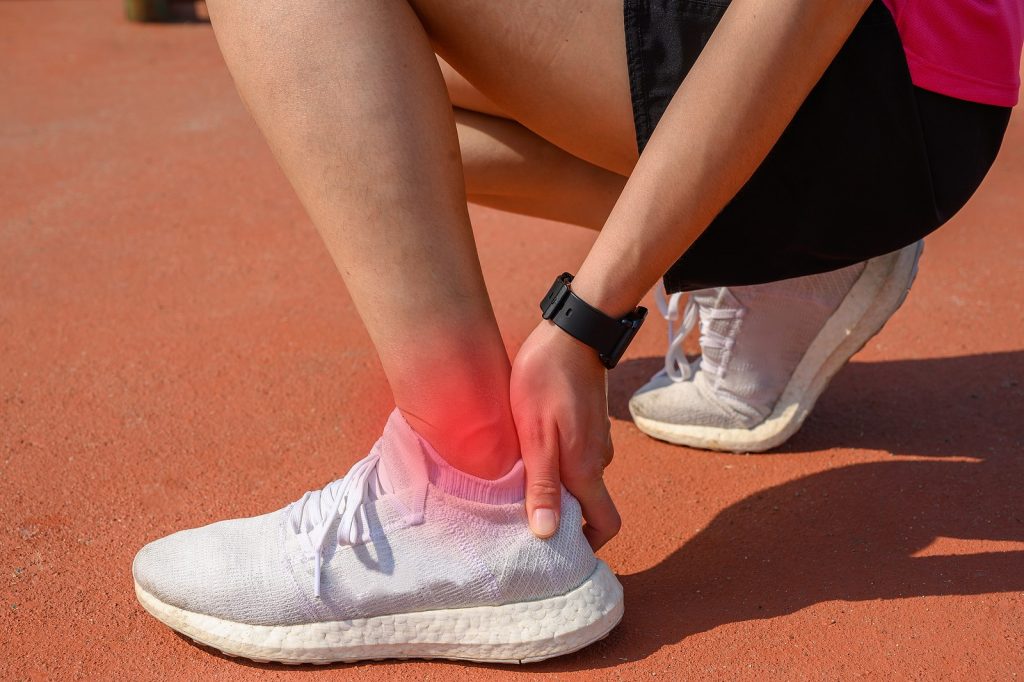
Used almost interchangeably, sprains and strains are mistaken to be one and the same. Anything from swelling to a twisting of the ankle is called a sprain or a strain. These are the most common sports injuries. How sprains and strains are treated during the healing process can mean the difference between healing and long-term pain and discomfort.
What is a Sprain?
A sprain is a ligament injury in which the ligament is stretched or torn. Resulting from a sprain, one or more ligaments may be injured. The level of injury to a single ligament (whether the rip is partial or total) and the number of ligaments involved will determine the severity of the injury. The ankles, knees, and wrists are the most sprained ligaments. (Massachusetts General Hospital)
Slippery or uneven surfaces make you more prone to such injuries. Using poorly maintained sporting equipment or footwear can also lead to sprains. Depending on the severity of the injury, the symptoms of a sprain may include swelling, bruising, pain and limited mobility of that particular joint. You may also hear a ‘pop’ or a sound when the injury occurs. (Mayo Clinic Staff, 2020)
Because the growth plates, areas of bone growth located at the ends of long bones, are weaker than their muscles or tendons, sprains and strains are uncommon in younger children. Children, on the other hand, are prone to fractures. (Massachusetts General Hospital)
What is a Strain?
A strain is an injury to a muscle or tendon that occurs because of overuse, force or stretching. A strain can be a simple overstretch of the muscle or tendon, or it can result in a partial or total tear, depending on the degree of the injury.
The lower back and the hamstring muscles (in the back of the thigh/knee) are two common sites for strains. Hand and forearm strains are more common in activities like gymnastics, tennis, rowing, golf, and others that involve a lot of gripping and repetitive movement. People who participate in racquet sports, throwing sports, and contact sports are at risk for elbow strains. Strains are common overuse injuries witnessed in activities like long-distance running, swimming and other endurance sports. (Massachusetts General Hospital)
Treatment of Sprains and Strains
The standard home care for sprains or strains that have similar symptoms can be treated by remembering the acronym, PRICE (Protection, Rest, Ice, Compression, Elevation) therapy.
Protection: To prevent additional injury, you may be splinted, taped, or braced.
Rest: Take rest from all activities that can include physical strain and cause pain. Do not put weight on the affected area, be it your wrist, ankle or elbow.
Ice: The affected area should be iced 3-5 times a day, for 15-20 minutes. This helps reduce the swelling, especially in the first 72 hours after the injury.
Compression: An injured wrist, ankle, knee, or elbow can be wrapped in an elastic bandage or a compression sleeve can be used. Compression with ice, helps to reduce swelling.
Elevation: Lie down and elevate the injured area above the level of your heart with a pillow. This will prevent fluid from pooling in the area, resulting in less swelling. (Wheeler, 2020)
While mild sprains and strains can be treated at home, depending on the severity of the injury, it is advised to consult a doctor. If you have severe pain and cannot put any weight on the affected area, if you cannot move the affected joint or if the area around it is too tender or if the joint appears crooked or has lumps around it, you should seek professional help. If you notice numbness or redness spreading from the area of the injury, you should consult a doctor.
It is recommended that you rest and do not try to get active too soon. But the injury should also not be inactive for too long as scar tissue will limit your future activity. Indulge in light activities, after proper consultation from a doctor or physical therapist. Generally, mild injuries take a few weeks to heal and recover.
Go Forward, Confidently
To prevent sprains, it is recommended that you follow a proper stretching routine and do regular strengthening exercises as a part of your physical activity, be it your workout or playing a sport. Do use appropriate footwear that provides complete support and ample protection.
Works Cited
Wheeler, Tyler. “Muscle and Ligament Sprains, Strains, and Tears.” WebMD, WebMD, 23 Nov. 2020, www.webmd.com/fitness-exercise/understanding-sprains-strains#1.
“Pediatric Sports Sprains and Strains.” Massachusetts General Hospital, www.massgeneral.org/orthopaedics/children/conditions-and-treatments/sports-sprains-and-strains.
“Sprains.” Mayo Clinic, Mayo Foundation for Medical Education and Research, 25 Sept. 2020, www.mayoclinic.org/diseases-conditions/sprains/symptoms-causes/syc-20377938.
